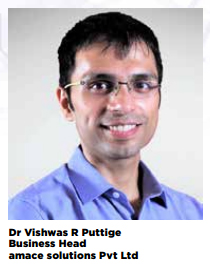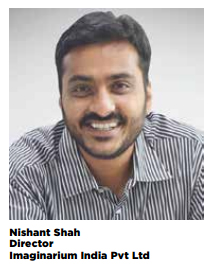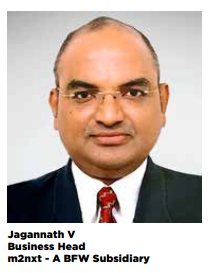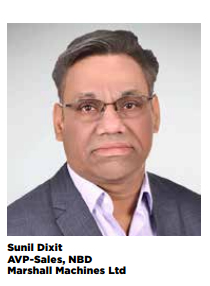Layer by Layer

Deemed as a transformative approach to industrial production, additive manufacturing is the current rage in the global industry. The titans of the Indian industry expound their views on its opportunities, the challenges in the way of embracing it and the ways to overcome them...
 AM benefits galore
AM benefits galore
Additive Manufacturing (AM) is slowly but gradually revolutionizing the way products are manufactured. AM is slowly but gradually revolutionizing the way products are manufactured. One of its key advantages is that it reduces lead time of manufacturing prototypes. For many years, manufacturers have used AM to quickly develop prototypes for validation purpose before taking up mass production. AM also allows multiple iterations of these prototypes to be printed in a very short span of time significantly contributing to the product development lifecycle. What can be seen from the graph below is that with the increase in complexity of a part its cost of manufacturing by conventional means increases exponentially. However, in the AM technology, there is no influence of complexity on the cost of a part. This opens up opportunities for designers and manufacturers where for ease of manufacturing using traditional techniques, complex parts or assemblies are split into multiple individual parts which are then assembled together. This allows part consolidation to be done, hence minimizing the total number of parts. Similarly, AM allows different variety of parts to be printed together without any cost impact. Hence, there is no minimum print quantity in AM.
The tooling industry seems to have accelerated the adoption of AM in their manufacturing processes. Plastic parts with complex profiles, curved surfaces and varying wall thicknesses tend to take much longer time for cooling. Today, time is money and in the Injection Moulding industry, cycle time is usually determined by the cooling Injection moulders. Complex conformal cooling channel circuits that are impossible to be created through conventional manufacturing methods can be 3D printed in order to bring about uniform cooling in the injection moulding dies that ultimately leads to an improvized part quality and cycle times.
Relearning DfAM
Since its emergence in the 1980s, AM has grown beyond the scope of rapid prototyping. Once deployed purely for prototyping applications, it is today increasingly being used for tooling, space, aviation and defence parts, marine and automotive spare parts and other small series and batch production. AM has found innovative applications and is helping reduce production costs, lead times and enhance product performance. Interestingly, many automakers in the US and Europe have already deployed 3D printing to manufacture parts for their premium automobile models. However, various studies have found that over 63 percent of enterprises deploy AM for prototyping applications, while only 21 percent utilize AM to manufacture parts that that cannot be made with any other manufacturing technology.
One of the key challenges is understanding of design concepts for AM which is now popularly known as DfAM (design for additive manufacturing). Some of the conventional design techniques will have to be unlearnt and DfAM will have to be relearnt. This not only makes the designed parts more suitable to AM but also can lead to cost reduction. To bring about AM awareness and enable a smooth transition of AM into production related activities, many software providers are now offering AM software suites that contain Design for AM (DfAM), Generative designing and other optimization tools. Another challenge is the high cost machines, making the overall process expensive. However, with time the costs of machines have been reducing and the machines are getting more productive in nature. This allows more printing to be done in lesser time making it more cost effective. In spite of this, the overall cost of additive manufacturing is substantially higher than the conventional methods for more type of parts. Today, there are a few emerging manufacturers in India introducing their advanced printing machines at cost-effective prices which will make the process more affordable in the times ahead.
The high raw material cost is another factor inhibiting large-scale adoption of the AM technology. The economies of scale will lead to a constant reduction in the raw material price, allowing more parts to be printed and used quickly. With the emergence of domestic powder manufacturers, we are likely to see raw material available for printing at competitive rates. While AM is a relatively new technology, there are still gaps to close in terms of availability of certain popular materials. Specific applications have specific materials due to the inherent properties. Not all materials have been qualified for printing by the manufacturers limiting the printing process to a select few that have been well established. Some of the more popular materials such as cast iron and steels like C45 etc. are yet to be established in the AM route. It’s a continuous endeavor by machine OEMs and powder manufacturers to develop new materials suiting specific applications. Although AM makes it possible to print assemblies with very short lead time, poor surface finish and the requirement of specialized post processing techniques make the process unattractive for production. To address this issue, machine OEMs, in particular, are coming up with machines that can print parts with enhanced surface finish and minimize post processing related activities.
 Space constraint resolved
Space constraint resolved
Additive Manufacturing offers many advantages over conventional manufacturing methods. It allows one to consolidate multiple assemblies into one single complex part, saving time and material. It also makes it easier to go inventory-less as companies can manufacture spare parts based on demand, freeing up warehouse space by thousands of parts. Companies can also manufacture obsolete parts by reverse-engineering the parts.
Hurdles abound in large-scale production.
There are four major challenges that are faced when adopting AM for large-scale production. The first one is high cost; there is a high investment cost when procuring the machines. Also, raw material tends to be more expensive as compared to traditional manufacturing. The second is the timeline; additive manufacturing tends to take longer than conventional processes like Injection Moulding. The third is limited material ability; metal printing offers only a select number of metals to work with, and while plastic may be more varied, it has several properties that are not ideal for large-scale production like porosity or poor heat and light resistance. The last major challenge is post-processing, as each part has to be finished and further processed.
Overcoming most of these challenges will come with time. As the technology grows, more materials and machines will be developed which will reduce the costs and increase the performance.
 AM is limitless
AM is limitless
AM offers a quick design validation of a new product with infinite iterations directly from the native CAD. Any contour of an object or component can be realized without any manufacturing/machining limitation. The strength of a material with varied strengths and rigidity within the same structure can be flexibly assigned. Entire sub-assembly can be built instead of assembly parts as there are no manufacturing limitations.
Paucity of skilled personnel
Cost and cycle time to produce a component are primary challenges in the use of AM in large-scale production. Another is limited availability of professionals with the required skill set like deep knowledge on the strength of materials required in AM and the creativity in design and product functionality. However, there are a few ways to address this such as identifying the entire sub-assembly instead of parts which calls for high reliability, criticality in performance and long life with minimal wear and tear. Secondly, the academia must focus on specialization on Polymers and Metal Additive in the course syllabus. Promoting the technology academically will increase its awareness and, hence, takers in the fraternity. Last but not least there is an acute need to create a Center of Excellence in every region for users to feel and experience the technology.
 Applications in a wide range of sectors
Applications in a wide range of sectors
The biggest advantage of AM over conventional manufacturing is quick throughput time. One can have the proof of their design concept in just a few hours. One can hold it, feel it and test it for various requirements. Hence, prototyping by AM is much faster, easier and cost-effective. Even small batch production by AM is viable in sectors such as Aerospace and Medicine.
AM offers a designer the flexibility to make changes without worrying about the feasibility. Complex parts and geometries which are difficult to produce by conventional methods can be easily produced with the help of AM.
3D printed human anatomy models used for education, training and surgical planning is replacing the use of cadavers. The Dental industry is already extensively using AM in crowns, bridges and clear-aligners because of the lower costs and ease of production. Less entry cost also makes it very useful for colleges and research labs.
The amount of material wasted in additive manufacturing is close to negligible. In conventional manufacturing, the products are created by removing material from large blocks, hence wasting material in the process. The importance of AM will only grow as the world moves towards cleaner and more sustainable methods of production.
AM enables shorter and more localized supply chains, therefore significantly reducing the amount of freight journeys and weight required to transport industrial materials that can be printed either on-premise or much nearer to the factory.
Raw material cost is concern
AM’s biggest challenge in large-scale production is the cost of raw material. In the Automotive industry, manufacturing of components is cost-sensitive, hence adoption of AM is not suitable.
Dimensional accuracy of parts produced by AM is also an area of concern. We have to depend on conventional processes like machining of those 3D printed parts to get the desired accuracy.

Poonam Pednekar
Chief Copy Editor
Magic Wand Media Inc
poonam.pednekar@magicwandmedia.in



 Facebook
Facebook.png) Twitter
Twitter Linkedin
Linkedin Subscribe
Subscribe